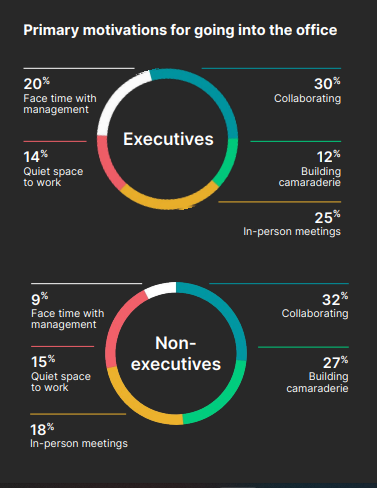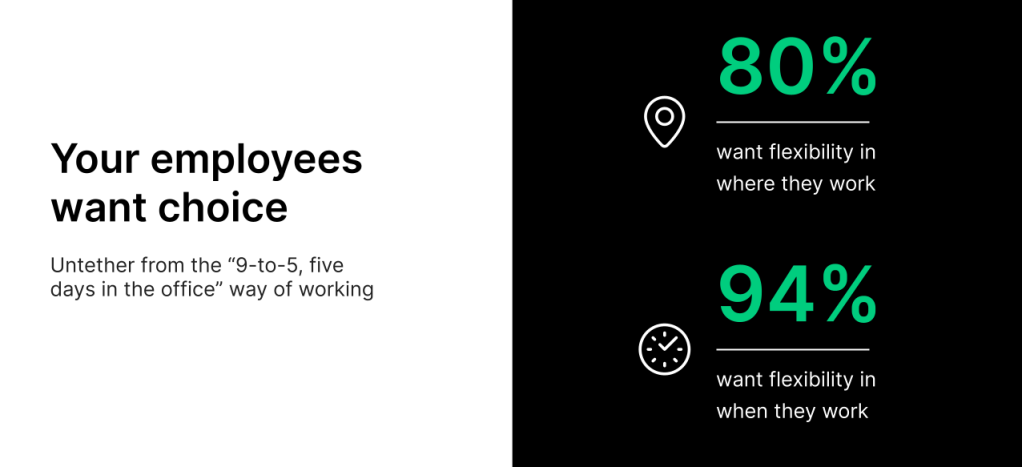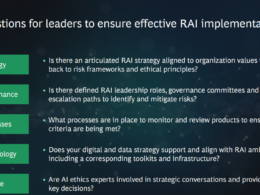Health Tranformation Institute (HTI)
Joaquim Cardoso MSc*
Chief Researcher and Editor
November 6, 2022
(*MSc from London Business School — MIT Sloan Programme)
Source: Future Forum
October 2022
What executives can do to actually solve the problem?
1.Lead with trust by offering more choice and flexibility
2.Prioritize fostering collaboration, social connections, and building camaraderie in both digital and physical workspaces

1.Lead with trust by offering more choice and flexibility
Flexibility is highly desired, second only to compensation when it comes to workplace satisfaction.
But while most conversations about workplace flexibility have centered on location — where people work — the question of when people work may be even more significant.
While 80% of global desk-based workers say they want location flexibility, 94% say they want schedule flexibility.
Leaders have the opportunity to gain a competitive edge by providing schedule flexibility more broadly, since the data shows that schedule flexibility isn’t just what people want — it also leads to stronger business results.

Schedule flexibility is highly correlated with positive employee sentiment, satisfaction, and performance:
employees with schedule flexibility show the highest scores across the board for quality-of-life measures, such as three times better work-life balance, and performance measures, such as 29% heightened productivity and 53% improved ability to focus.
And workers with schedule flexibility are 26% less likely to be burned out and report more than five times greater ability to manage work-related stress.
So what does the data show about who has access to flexible schedules?
Perhaps unsurprisingly, the more senior you are, the more likely you are to have schedule flexibility.
- Sixty-eight percent of executives say they are able to adjust their schedules with little to no constraints, compared with 39% of middle managers.
- And executives are three times as likely to have zero schedule constraints, compared with middle managers, indicating that schedule flexibility is still largely considered a perk or benefit of seniority.
Offering schedule flexibility to employees at all levels could improve business outcomes while reducing burnout and increasing employee engagement and loyalty.
Employees with no schedule flexibility are more than twice as likely to say they’re “very likely” to look for a new job in the coming year, compared with employees with moderate schedule flexibility.
Offering schedule flexibility is a genuine means to show your employees that you trust them, and trust begets engagement. Schedule flexibility has long been a perk afforded to the C-suite, but the data makes a good case that flexibility should be offered more widely to all.”
Helen Kupp, Senior Director and Co-Founder of Future Forum

2.Prioritize fostering collaboration, social connections, and building camaraderie in both digital and physical workspaces
Collaborating is the number one reason motivating non-executives to go into the office (32%), followed closely by building camaraderie (27%).
Executives, too, prioritize collaboration as their top motivator for in-office time, but at lower rates (30%), followed closely by “holding or participating in meetings” (25%), and “putting in facetime with management” (20%).
While building camaraderie is among the top reasons why non-executives want to spend time in the office, it’s dead last for the C-suite, at just 12%, meaning non-executives value building camaraderie at more than twice the rate of executives.
Executives, on the other hand, undervalue camaraderie and over value facetime and in-person meetings.
This disconnect suggests that executives could be overlooking the need to make it easier for employees to collaborate and connect — in both physical and digital workspaces.

Investing in a “digital headquarters” that makes it easier for people to collaborate and connect can pay dividends.
Employees who work for companies they describe as technology innovators report 1.5 times as much productivity and 2.2 times the sense of belonging as employees who work for companies they describe as technology laggards.
And employees working at digital laggards are 38% more likely to experience burnout than employees working at digital innovators.
Investing in a “digital headquarters” that makes it easier for people to collaborate and connect can pay dividends.
Employees who work for companies they describe as technology innovators report 1.5 times as much productivity and 2.2 times the sense of belonging as employees who work for companies they describe as technology laggards.
“Digital-first doesn’t mean never in-person,” says Debbie Lovich, Managing Director and Senior Partner at Boston Consulting Group (BCG), a founding partner of Future Forum.
“The majority of people want to be physically together, especially for collaborating and building camaraderie.
But leaders and their teams need to plan their time in the office differently.
Regular office time should be used for interactive work: brainstorming, training, team building, and networking.
Without this intentional shaping of team calendars, office workers will be commuting to just sit at their desks on Zoom calls all day — and that will erode morale.”
But leaders and their teams need to plan their time in the office differently.
Regular office time should be used for interactive work: brainstorming, training, team building, and networking.
Names mentioned:
Slack; management leadership for tomorrow (mlt); bcg; millerknoll
Brian Elliott, the Executive Leader of Future Forum
Ryan Anderson, the Vice President of Global Research and Insights at MillerKnoll
Sheela Subramanian, Co-Founder of Future Forum
Helen Kupp, Senior Director and Co-Founder of Future Forum
Tina Gilbert, Managing Director at Management Leadership for Tomorrow (MLT),
Debbie Lovich, Managing Director and Senior Partner at Boston Consulting Group (BCG), a founding partner of Future Forum.
How to cite this report
Fall 2022 Future Forum Pulse, https://futureforum.com/research/pulse -report-fall-2022-executives-feel-strain -leading-in-new-normal/
Originally published at: https://futureforum.com/












